Summary fields
Summary fields are a great way to give your users useful data at a glance. One common example is a summary field which displays the total number of open tasks belonging to an account record. This allows users to easily see how many tasks need to be taken care of for a specific account.
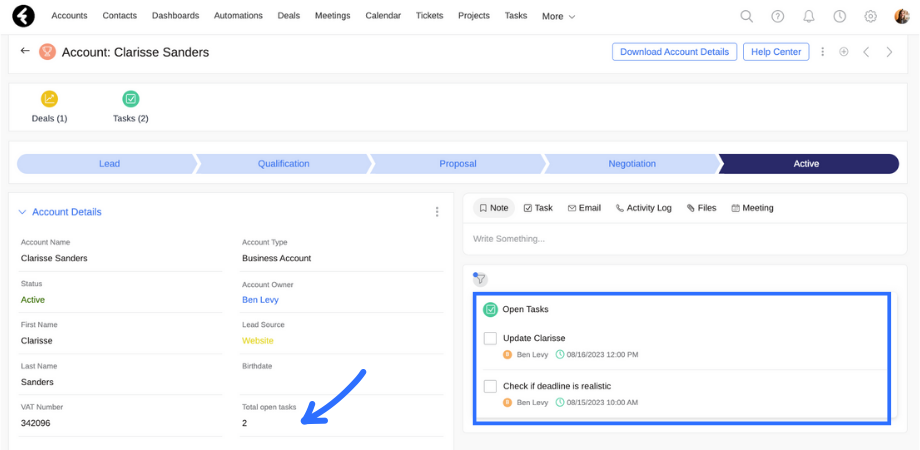
To create a summary field, simply choose the Summary option when you create a new field and then set a name. For a detailed explanation on adding and editing fields, see the following article. Once you’ve created your new summary field or opened an existing one, you can edit its settings which are explained below.
Summarized related object
The Summarized Related Object field is a picklist where you can choose which object you would like to summarize. It will include all the objects which are related to the current object.
Each related object’s name will be displayed, followed by parentheses containing the name of the lookup field in the related object. For example, if you would like to summarize the total amount of tasks in each account, choose the Tasks (Related to) option.

Now your field will summarize the task records for each account using the Related to field. If, for example, there are 20 total tasks and three of them have the Related to field set to “James Walsh”, your newly created Total tasks field will display the number three on James Walsh’s account page. This is because there are three task records which are related to James Walsh.
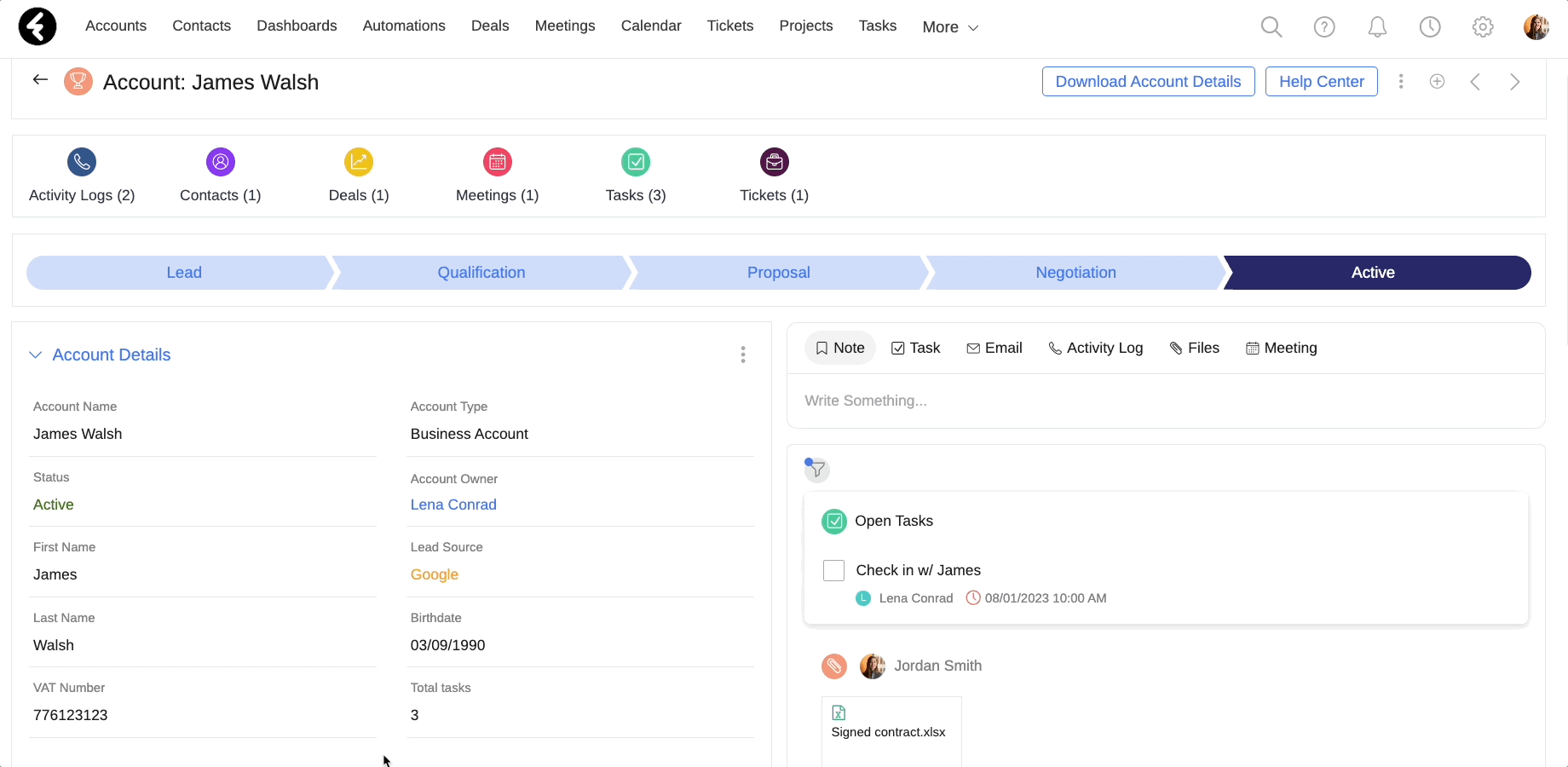
Summary type
Once you’ve chosen an object to summarize, the Summary Type dropdown list will appear, which has four different summary options. These options will change dynamically based on the chosen Field to Summarize, which is explained below.
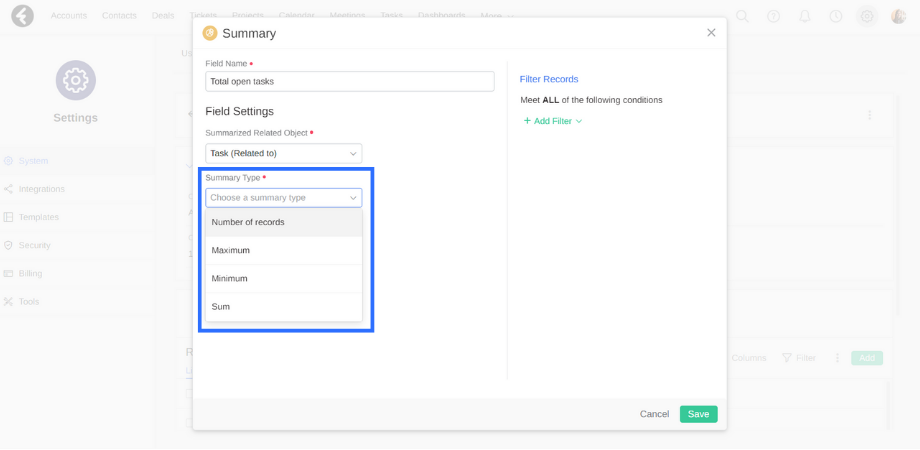
Number of Records
This option will display the amount of records related to the current record. When choosing this option, set the Precision to zero so that the total you get is a whole number. Number of records will not display the Field to Summarize option, as it summarizes the whole object. If the current record has three tasks, for example, this field will display the number three.
Maximum
This option displays the maximum value in the summarized field from all the related records, and exists for both number and date fields. For numbers this field will display the largest number, so that if the numbers in the selected field are -3, 87, and 209 the number 209 will be displayed here. For date fields, this field will show the date which is furthest ahead, so that if the dates in the selected field are 11/21/2005, 03/15/2023, and 09/28/2024 the date 09/28/2024 will be displayed.
Minimum
This option displays the minimum value in the summarized field from all the related records, and exists for both number and date fields. For numbers this field will display the smallest number, so that if the numbers in the selected field are -3, 87, and 209 the number -3 will be displayed here. For date fields, this field will show the date which is farthest behind, so that if the dates in the selected field are 11/21/2005, 03/15/2023, and 09/28/2024 the date 11/21/2005 will be displayed.
Sum
This option calculates and displays the total combined value (sum) of the summarized field from all the related records. The sum option can only be chosen for number fields, and will display the combined total. For example, if the numbers in the field selected are 23, 61, 34, and 8 this field will display the number 126, which is the sum of the listed numbers.
Field to summarize
The Field to Summarize dropdown list includes a list of all the summarizable or number and date fields in the selected related object. It will appear and is required for the maximum, minimum, and sum summary types, and lets you select the field which you would like to summarize.
Click on the down arrow to open a list of all the field options, and then select the field you’d like to summarize. If there are no numeric or date fields, No matches found will be displayed and you won’t be able to save the field.
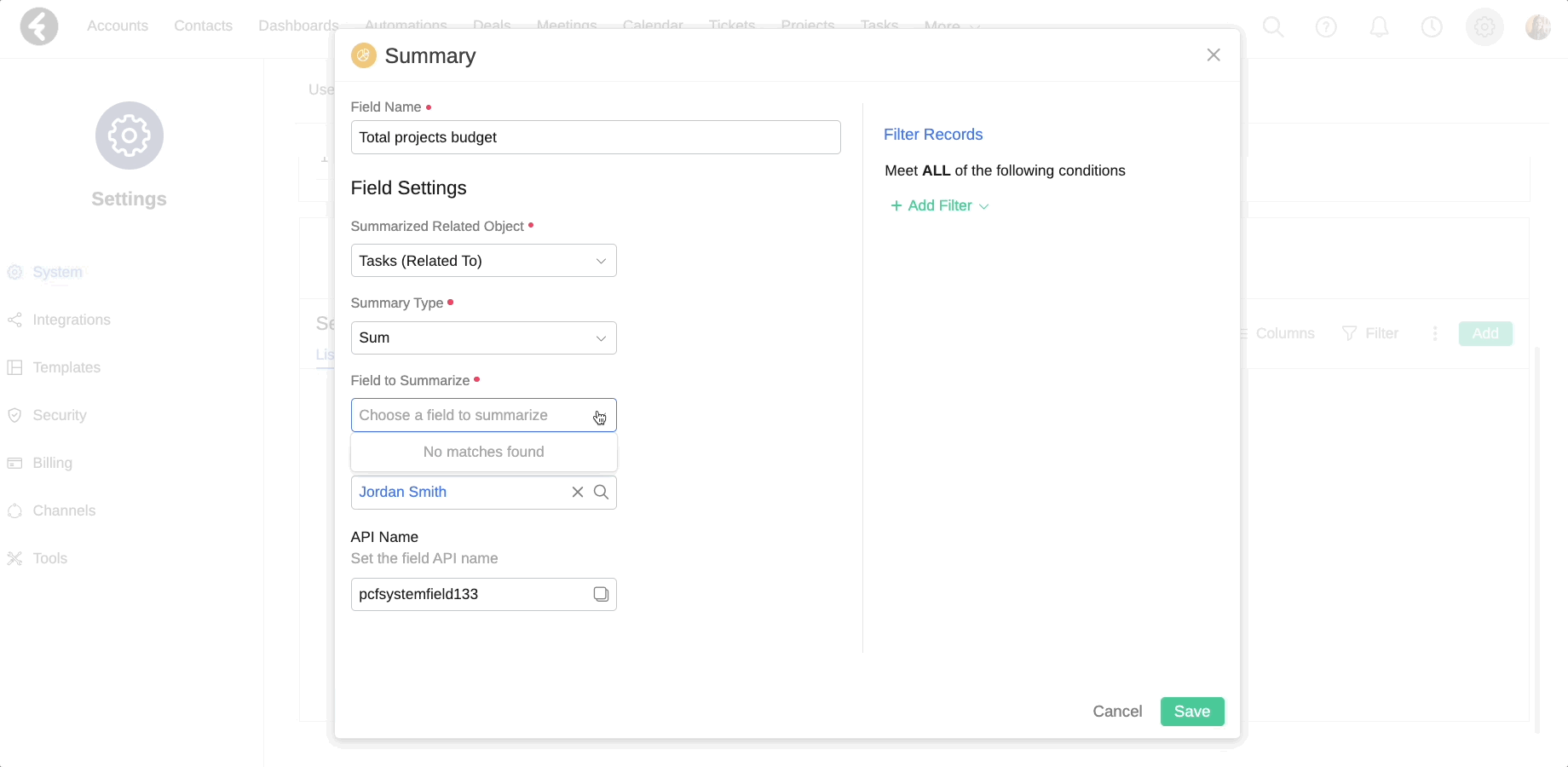
Precision
If you’ve chosen a number field in the step above, the Precision field will appear. Set the precision dropdown list to the amount of numbers you would like to appear after the decimal point. You can choose between a whole number and up to four numbers after the decimal. If you’re summarizing a money field, for example, you may wish to set the precision to .00. Learn more about the precision here.
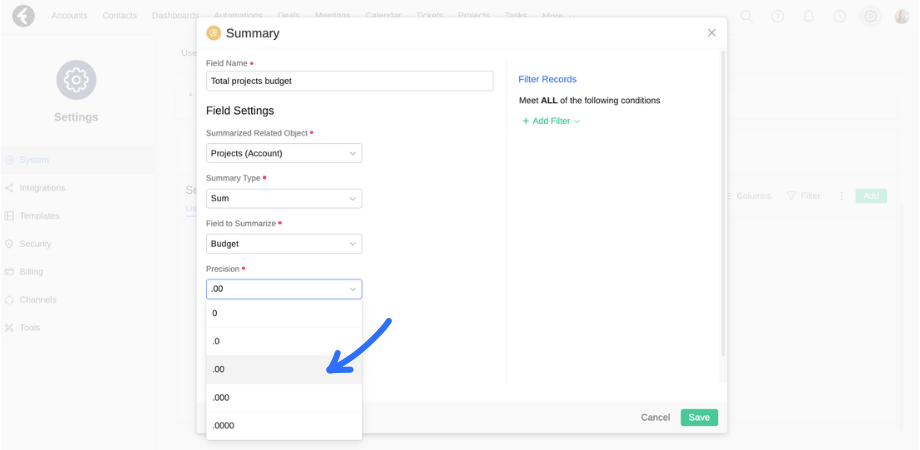
User
The User field is a required field which controls which records will be summarized, and will automatically fill in with the user who created the record. You can easily change the User at any time by clicking the magnifying glass and selecting a new user.
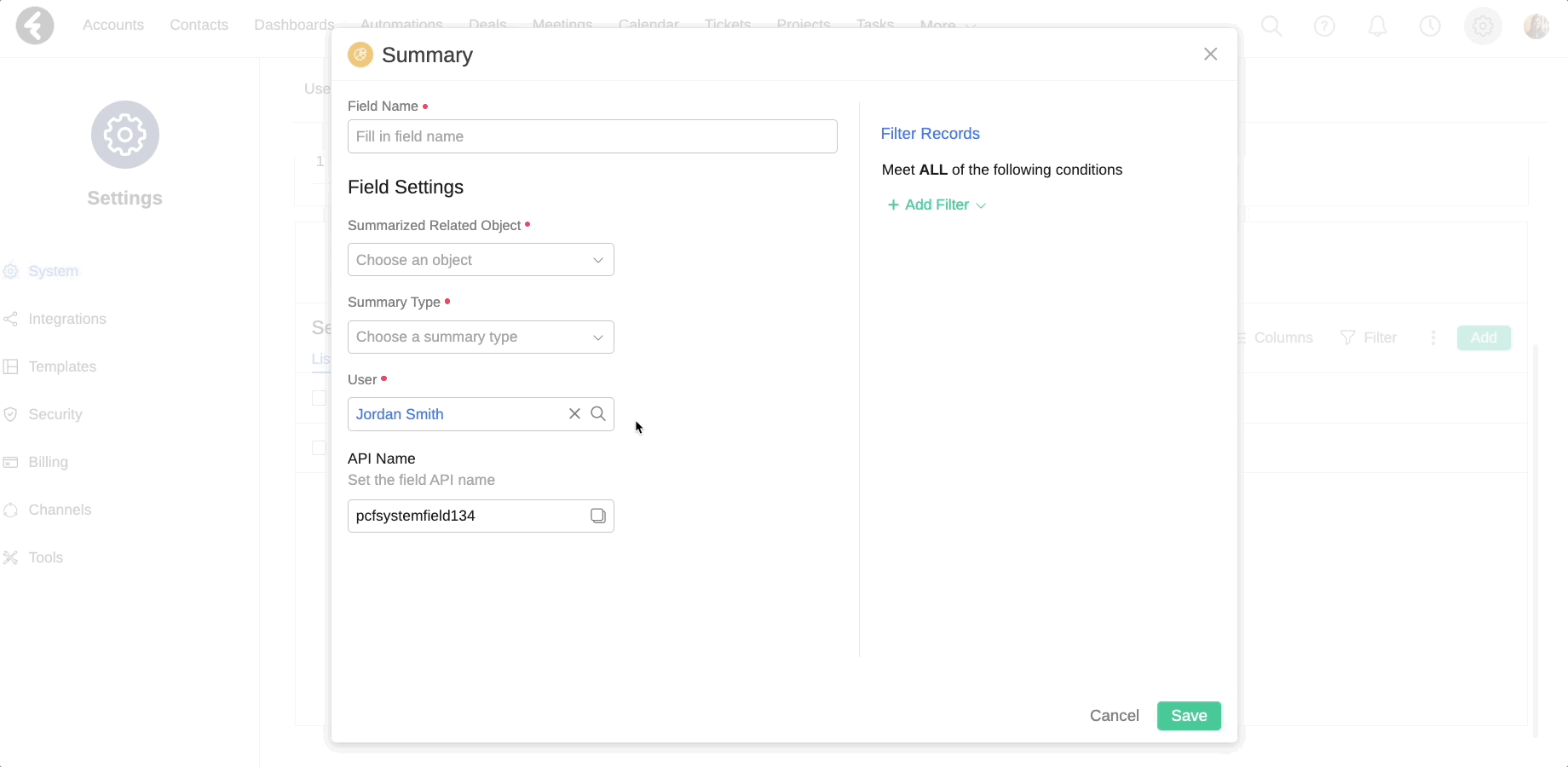
The total amount of records summarized is based on which records the system user set in the User field has access to. For example, if there are 43 open tasks, John is set as the user of the summary field, and John only has sharing permissions to 28 of the open tasks, the summary field will only show 28 open tasks. If you’d like to calculate the sum of every record in the summarized object, set the User field to an admin system user; Admin users have access to every record in the system. You can also update the permissions settings of any user to give them access to all the records. For more information, check out our role permissions article here.
Filters
If you’d like, you can add filters in order to summarize only a certain set of records. Use the filter records section on the right of the Summary dialog box.
For example, you can choose to only count the amount of open tasks. Click the Add Filter button, set the field to Status, the operator to Equals, and the value to Open. Now your summary field will only summarize records which meet the filter’s conditions. You can learn more about filters here.
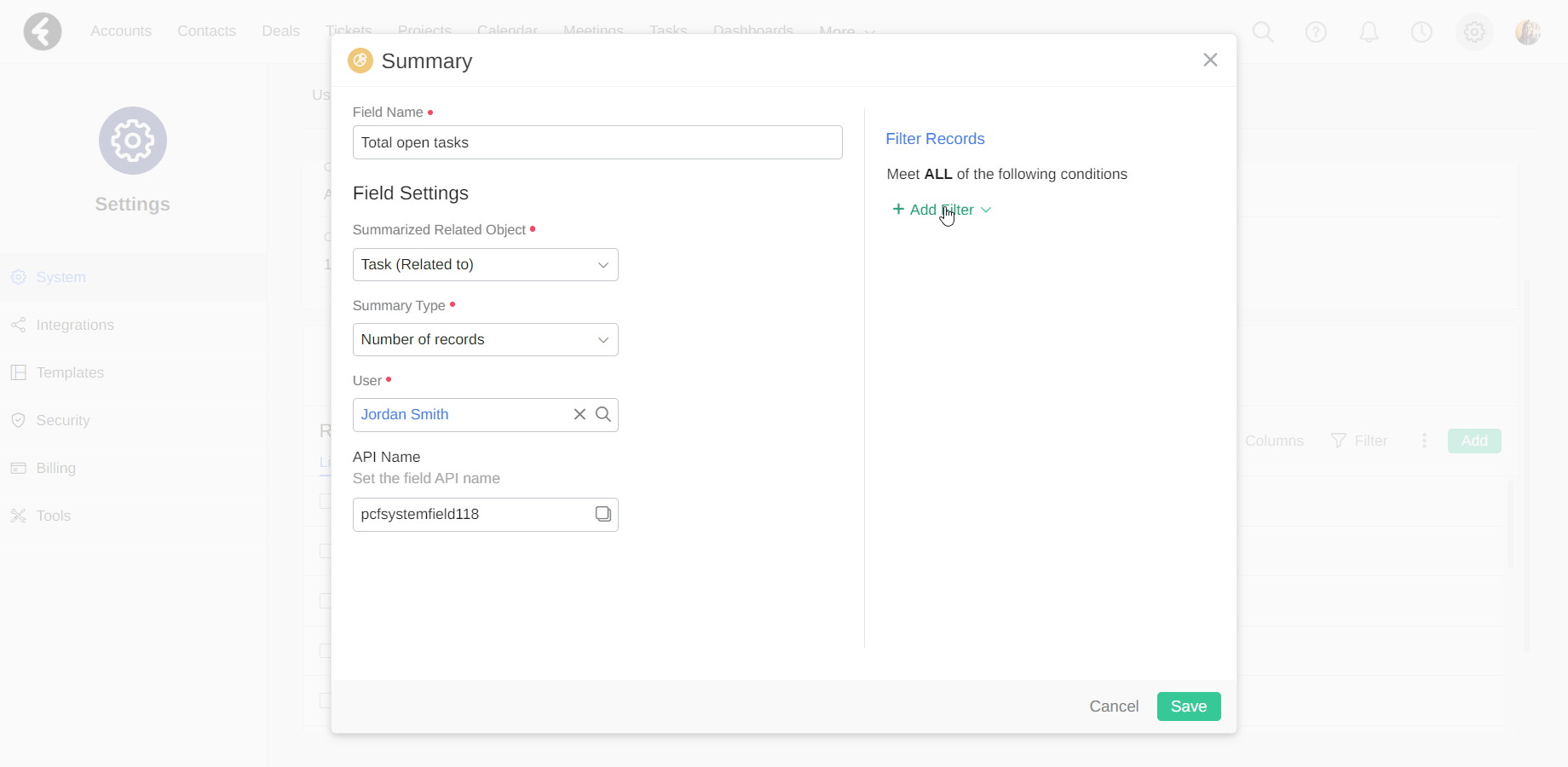
Once you’ve set all your summary settings, be sure to click Save.